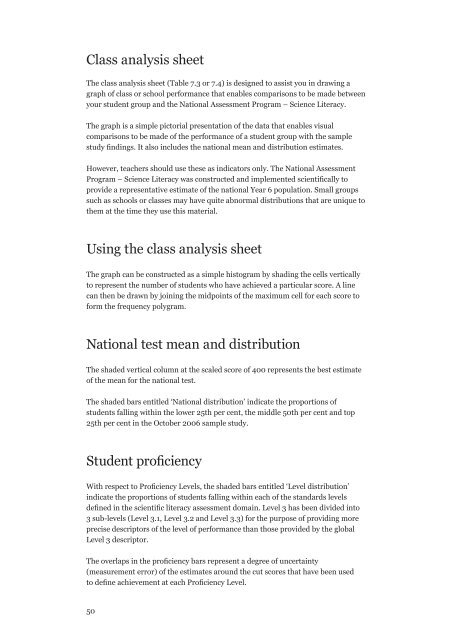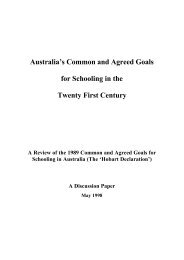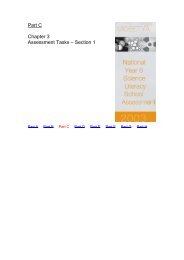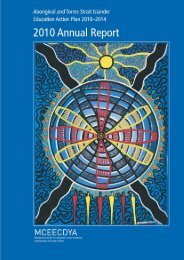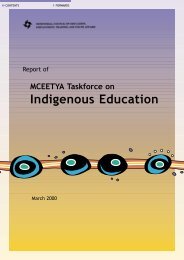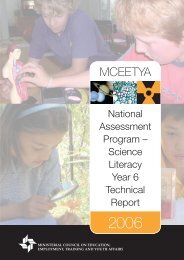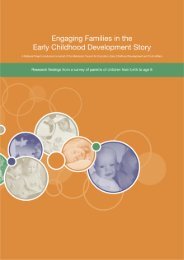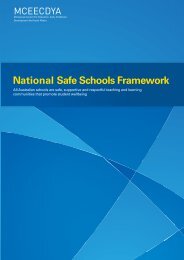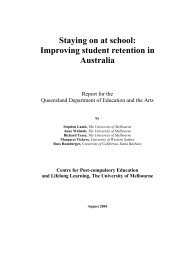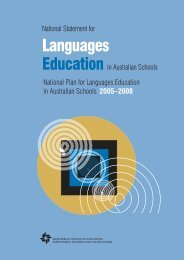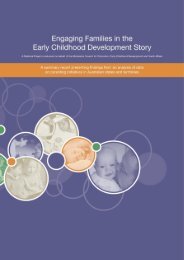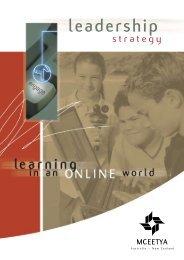Science Literacy 2006 school release materials - NAP
Science Literacy 2006 school release materials - NAP
Science Literacy 2006 school release materials - NAP
Create successful ePaper yourself
Turn your PDF publications into a flip-book with our unique Google optimized e-Paper software.
Class analysis sheetThe class analysis sheet (Table 7.3 or 7.4) is designed to assist you in drawing agraph of class or <strong>school</strong> performance that enables comparisons to be made betweenyour student group and the National Assessment Program – <strong>Science</strong> <strong>Literacy</strong>.The graph is a simple pictorial presentation of the data that enables visualcomparisons to be made of the performance of a student group with the samplestudy findings. It also includes the national mean and distribution estimates.However, teachers should use these as indicators only. The National AssessmentProgram – <strong>Science</strong> <strong>Literacy</strong> was constructed and implemented scientifically toprovide a representative estimate of the national Year 6 population. Small groupssuch as <strong>school</strong>s or classes may have quite abnormal distributions that are unique tothem at the time they use this material.Using the class analysis sheetThe graph can be constructed as a simple histogram by shading the cells verticallyto represent the number of students who have achieved a particular score. A linecan then be drawn by joining the midpoints of the maximum cell for each score toform the frequency polygram.National test mean and distributionThe shaded vertical column at the scaled score of 400 represents the best estimateof the mean for the national test.The shaded bars entitled ‘National distribution’ indicate the proportions ofstudents falling within the lower 25th per cent, the middle 50th per cent and top25th per cent in the October <strong>2006</strong> sample study.Student proficiencyWith respect to Proficiency Levels, the shaded bars entitled ‘Level distribution’indicate the proportions of students falling within each of the standards levelsdefined in the scientific literacy assessment domain. Level 3 has been divided into3 sub-levels (Level 3.1, Level 3.2 and Level 3.3) for the purpose of providing moreprecise descriptors of the level of performance than those provided by the globalLevel 3 descriptor.The overlaps in the proficiency bars represent a degree of uncertainty(measurement error) of the estimates around the cut scores that have been usedto define achievement at each Proficiency Level.50


